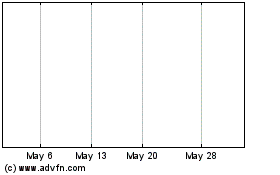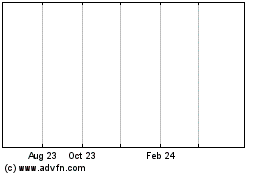First LASIK With the Advanced IntraLase Method(TM) Performed on U.S. Naval Aviator
December 11 2006 - 11:41AM
PR Newswire (US)
- For the First Time in the United States, LASIK and Military
Aviation Come Together as Groundbreaking Bureau of Naval Medicine
Project Opens Door for Previously Ineligible Naval Aviators -
IRVINE, Calif., Dec. 11 /PRNewswire-FirstCall/ -- Marking both a
milestone in U.S. Naval medicine and refractive surgery,
IntraLase(R) Corp. (NASDAQ:ILSE) today confirmed the Navy's
announcement that the first LASIK procedure using the IntraLase
Method has been performed on an aviator as part of a new Bureau of
Naval Medicine project
(http://www-nmcsd.med.navy.mil/news/news_view.cfm?nrid=258).
Currently, LASIK is not approved for use in the U.S. military
aviation community. But, after many years of intense LASIK clinical
trials on non-aviation personnel, the new Bureau of Naval Medicine
project is underway to treat four additional aviators with LASIK
using the IntraLase Method scheduled as part of the first step of
the program. Though LASIK has been around for many years, concerns
about the harsh aviation environment prevented its use in U.S. Navy
aviators. Aeromedical professionals have been cautious of employing
the procedure on aviators who frequently encounter environmental
extremes such as high altitude, dry air, wind blast and 'G' forces.
According to Capt. Steve Schallhorn, Navy Program Manager for
Refractive Surgery, "While LASIK has been around for many years and
is a common elective procedure, this is a significant first in the
aeromedical field. Wavefront guided LASIK using the IntraLase
Method represents the best-of-the-best and is a truly exciting
advancement for critical Navy personnel whose sight is of utmost
importance in their military duties." The IntraLase FS laser is the
first technology for a truly all-laser, blade-free LASIK procedure,
replacing the hand-held microkeratome blade historically used in
creating LASIK corneal flaps -- the first step of the procedure --
with a computer-guided, ultra-fast femtosecond (fem-to-second)
laser. The IntraLase laser virtually eliminates almost all of the
most severe, sight-threatening LASIK complications related to use
of the microkeratome and, by creating an optimal corneal surface
below the flap, provides for better visual outcomes -- taking many
patients to 20/20 vision and beyond. While LASIK remains the most
popular surgery in the civilian community, the Naval Medical Center
San Diego's Refractive Surgery Center is the only center currently
in Department of Defense offering LASIK using the IntraLase Method.
The first candidate was aviator, Marine Capt. Michael Oginsky, an
FA 18/D weapons and sensor officer with VMFAT 101 at U.S. Marine
Corps Air Station Miramar. Within just four hours, Oginsky's vision
was 20/20. At the 24-hour mark, his vision exceeded 20/20. There
are four additional aviators scheduled to take part in the first
step of the program and have LASIK using the IntraLase Method
performed. More than 1,200 surgeons worldwide have incorporated the
blade-free IntraLase Method into their LASIK practices. In fact,
the majority of the top U.S. ophthalmic teaching institutes
including Duke University Medical School, the Wilmer Eye Institute
at Johns Hopkins, the Bascom Palmer Eye Institute at University of
Miami, and Stanford University use the IntraLase FS laser
technology to train future generations of LASIK surgeons. LASIK
using the Advanced IntraLase Method The 4th Generation IntraLase FS
laser uses an infrared light beam, generating 60,000 pulses per
second, to prepare the intracorneal bed and create the corneal flap
in the first step of LASIK. * Using an "inside-out" process, the
laser beam is precisely focused to a point within the cornea. * The
laser pulses then create thousands of microscopic bubbles which
define the incision within the intracorneal surface. * Along the
edge, bubbles are then stacked up at a beveled angle -- a feature
unique to the IntraLase Method -- to the corneal surface to
complete the flap. * From start to finish, the IntraLase Method
typically takes 15 - 30 seconds. * The physician then exposes the
prepared corneal bed for excimer laser treatment (the second step
of LASIK) by lifting the flap. * The LASIK procedure is complete
when the flap is securely repositioned on its beveled edge. With
the IntraLase laser, the surgeon can precisely control the critical
first step of LASIK. Physician-programmed laser specifications
include flap diameter, depth, hinge location and width, and
side-cut architecture -- factors which can be varied to meet
patients' needs. The IntraLase laser creates a distinctive
beveled-edge flap, which allows for precise repositioning,
alignment and seating after the LASIK procedure is completed. This
feature helps reduce the risk of flap displacement, a complication
seen with microkeratome flaps. Blade-Free Safety and Better Vision
with All-Laser LASIK The IntraLase laser makes LASIK safer by
replacing the hand-held microkeratome blade with the
computer-guided precision of a laser, virtually eliminating almost
all the most severe, sight-threatening blade-related LASIK
complications as a result. Leading LASIK surgeons have reported on
data of the IntraLase Method procedures, which demonstrate an
impressive safety profile. Beyond improving the safety of the
procedure, LASIK using the advanced IntraLase Method has been shown
clinically to deliver better visual outcomes in both standard and
Custom LASIK procedures with more patients achieving visual acuity
of 20/20, 20/15 and even 20/12.5. These remarkable results are the
product of the optimized corneal surface prepared by the IntraLase
FS laser in creating the corneal flap. The precision of the laser
reduces the microscopic inconsistencies on the corneal bed,
providing an optimal surface for the vision correction performed by
the excimer laser in step two of the LASIK procedure. About
IntraLase Corp. IntraLase designs, develops, and manufactures an
ultra-fast laser that is revolutionizing refractive and corneal
surgery by creating safe and more precise corneal incisions.
Delivering on the promise of ophthalmic laser technology, the
IntraLase FS laser, related software, and disposable devices
replace the hand-held microkeratome blade used during LASIK
surgery. The unsurpassed accuracy of IntraLase's
computer-controlled femtosecond laser has been shown to improve
safety profiles and visual outcomes when used during LASIK.
Additionally, the IntraLase FS laser creates precision-designed
intracorneal incisions that when combined can be used during
lamellar and penetrating keratoplasty, and intrastromal ring
implantation. IntraLase is presently in the process of
commercializing applications of its technology in the treatment of
corneal diseases that require corneal transplant surgery. The
company's proprietary laser and disposable patient interfaces are
presently marketed throughout the United States and 32 other
countries. IntraLase is headquartered and manufactures its products
in Irvine, California. For additional information, visit the
company's web site: http://www.intralase.com/. Forward Looking
Statements Statements contained in this press release that are not
historical information are forward-looking statements as defined
within the Private Securities Litigation Reform Act of 1995.
Forward-looking statements can be identified by the use of words
such as "believe," "expect," "anticipate," "intend," "plan,"
"estimate," "project," or words of similar meaning, or future or
conditional verbs such as "will," "would," "should," "could," or
"may." Such forward-looking statements are subject to risks and
uncertainties that could cause actual results to differ materially
from those projected or implied. Those risks and uncertainties
include, but are not limited to: the degree of continued acceptance
of LASIK surgery; potential complications revealed by long-term
follow up; the extent of adoption of our product offering by LASIK
surgeons; general economic conditions; changes in federal tax laws
governing the ability of potential LASIK patients to use pre-tax
dollars to pay for LASIK surgery; the scope of government
regulation applicable to our products; patients' willingness to pay
for LASIK surgery; our ability to compete against our competitors;
the effectiveness of our measures to ensure full payment of
procedure fees; the occurrence and outcome of product liability
suits against us; our ability to adequately protect our
intellectual property; whether we become subject to claims of
infringement or misappropriation of the intellectual property
rights of others; the continued availability of supplies from
single-source suppliers and manufacturers of our key laser
components; the ability of our managers, operations, and facilities
to manage our growth; the success of our expansion into markets
outside the United States; whether we lose any of our key
executives or fail to attract qualified personnel; or if our new
products or applications fail to become commercially viable.
Certain of these risks and uncertainties, in addition to other
risks, are more fully described in the company's quarterly report
on Form 10-Q for the period ending September 30, 2006, as filed
with the Securities and Exchange Commission on October 31, 2006.
These forward-looking statements are made only as of the date of
this press release, and the company assumes no obligation to update
or revise the forward-looking statements, whether as a result of
new information, future events, or otherwise. DATASOURCE: IntraLase
Corp. CONTACT: Liana Miller of The Goolsby Group, +1-949-276-8920,
, for IntraLase Corp. Web site: http://www.intralase.com/
Copyright
Intralase (NASDAQ:ILSE)
Historical Stock Chart
From Apr 2024 to May 2024

Intralase (NASDAQ:ILSE)
Historical Stock Chart
From May 2023 to May 2024
